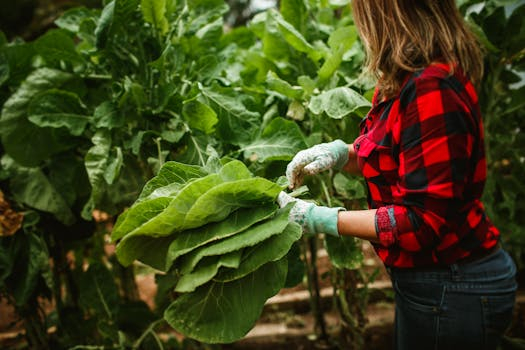Community-Supported Agriculture: Connecting With Local Farmers
When we think of buying food, most of us head straight to the big supermarkets and load up our carts with the convenience of pre-packaged produce. However, there is a growing movement towards a more personal and community-oriented approach to food consumption: Community-Supported Agriculture (CSA). Through CSA, individuals are able to connect with local farmers and receive a weekly share of fresh, locally-grown produce. Not only does this support local agriculture, but it also promotes a healthier and more sustainable way of living. In this article, we will dive into the world of CSA and explore the benefits of connecting with local farmers through this movement.
The Basics of Community-Supported Agriculture (CSA)
Community-Supported Agriculture (CSA) is a model of food production and distribution where consumers directly support local farmers by purchasing a share of the farm’s produce. Typically, this involves individuals paying a lump sum of money at the beginning of the growing season in exchange for a weekly or bi-weekly share of the farm’s harvest. This allows farmers to receive income early on in the growing season when they need it most, and in return, consumers receive fresh and locally-sourced produce throughout the year.
The Benefits of CSA
One of the main benefits of CSA is the support it provides to local farmers. By purchasing a CSA share, consumers are directly contributing to the financial stability of small, family-owned farms. This not only helps to sustain local agriculture but also helps to preserve farmland and promote biodiversity.
Another benefit of CSA is the increased connection between consumers and their food. When buying produce from a supermarket, it can be difficult to know where the food comes from or how it was grown. With CSA, consumers have the opportunity to meet the farmers and see firsthand how their food is produced. This creates a more personal and transparent relationship between farmers and consumers, and also allows consumers to have a deeper understanding of the food they are eating.
Furthermore, CSA promotes a more sustainable way of living. By supporting local farmers, consumers are reducing their carbon footprint by decreasing the distance their food needs to travel. CSA also encourages farmers to use sustainable and environmentally-friendly farming practices, which helps to preserve the land for future generations.
Connecting with Local Farmers
One of the most rewarding aspects of CSA is the connection it creates between consumers and local farmers. Many CSA programs offer opportunities for shareholders to visit the farm, participate in harvest days, and even volunteer on the farm. This allows consumers to not just be passive recipients of their food, but active contributors in the growing and harvesting process.
Moreover, connecting with local farmers through CSA can lead to a greater sense of community. By supporting local agriculture, consumers are also supporting the local economy and building relationships with their neighbors. Many CSA programs also offer events and gatherings for shareholders, creating a sense of camaraderie and shared values among members.
Getting Involved in CSA
If you are interested in participating in a CSA program, there are a few steps you can take to get involved. The first step is to do some research and find a CSA program in your local area. This can be done through a simple internet search or by asking friends and family for recommendations.
Once you have found a CSA program, it is important to understand their specific practices and expectations. Some CSA programs require shareholders to pick up their shares directly from the farm, while others may have drop-off locations in more convenient locations. It is also important to find out what types of produce are included in the share and if there are any additional costs, such as a membership fee or delivery fee.
Finally, consider the seasonality of CSA shares. The availability of produce may vary depending on the time of year and your location. It is important to have a realistic understanding of what to expect from your share and to be open to trying new and unfamiliar fruits and vegetables.
In Conclusion
Community-Supported Agriculture is more than just a food distribution model; it is a movement towards a more sustainable and community-oriented way of living. Through CSA, individuals are able to support local farmers, foster a deeper connection with their food, and contribute to a more environmentally-friendly future. So next time you’re at the supermarket, consider the alternative of joining a CSA program and connecting with your local farmers.











